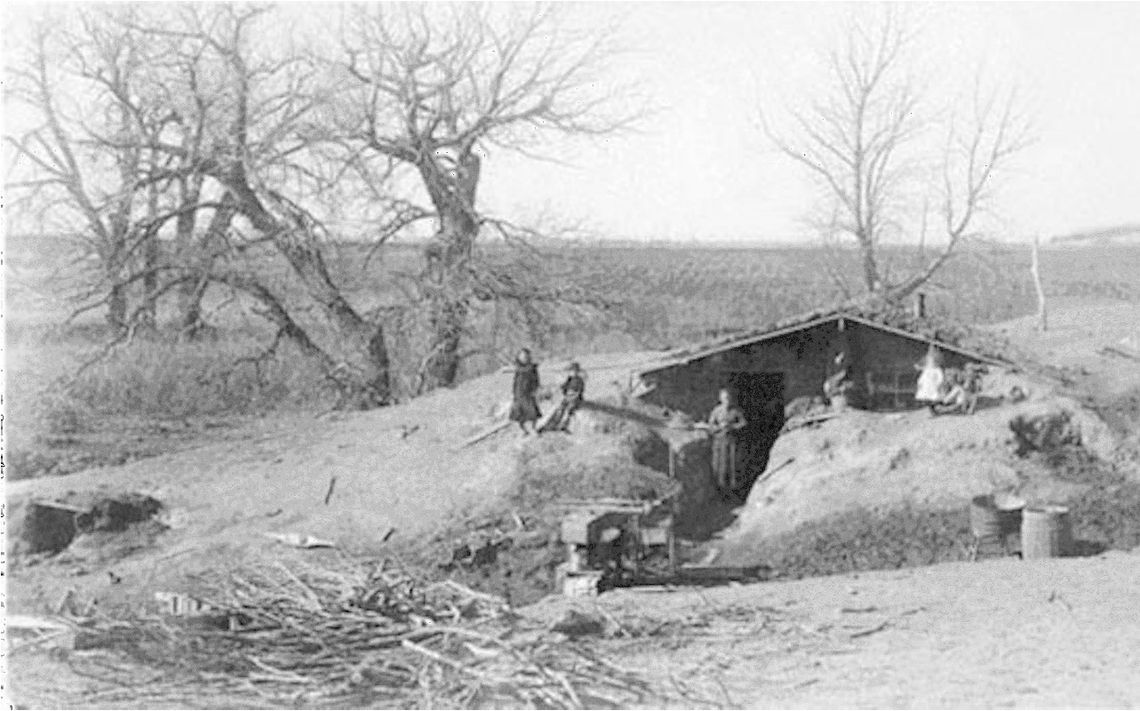Red Willow County’s First Thanksgiving
Thanksgiving in 1896 was celebrated on Nov. 26, and editor F. M.
Kimmell of the “McCook Tribune” took advantage of the holiday to reflect on Red Willow County’s recent past.
“I wonder if any one has thought of this month being the 25th anniversary of the first settling of the county," he wrote in the “Tribune” on Nov.
27, 1896.
"The first Thanksgiving dinner was eaten in camp near the mouth of Red Willow creek, and in some respects was the most unique Thanksgiving dinner ever eaten. The 11 men who represented ‘The Republican Valley Land and Townsite company,’ had reached their destination [starting from Nebraska City] the latter part of November, 1871, and after locating the Red Willow townsite and their respective claims, announced their readiness to return.
“Two of the company kept in camp by allotted duties, had no opportunity of attending to individual interests, and looked upon the proceedings as being extremely selfish and unjust, and so pronounced it in vigorous language. The usual way of eating was in regular camp style, each as he pleased, but in deference to the day, this dinner must be somewhat ceremonious.
The tin plates were arranged as on a table and all sat around, except the two, who were not yet in a thankful frame of mind, and while a blessing was asked, one of them, in an aside, muttered quite sulphurous words.
“After while, matters were so adjusted that the two shared in ad vantages taken by the others, and the lurid atmosphere cleared. Buffalo meat, wild turkey and prairie chicken were eaten with the regulation camp fare, among which was the inevitable flapjacks and syrup. It was too cold for the syrup to run, so it was cut off in chunks and lengths as it pressed through the bung hole of the keg.
On occasion, one would become impatient for his sweet morsel, and reach over another to secure the piece for which the first was waiting, when exhibition of temper and ready use of strong words followed.”
Kimmell went on to briefly high - light county history since that first Thanksgiving in 1871: “Lawlessness, peculiar to frontier days, has been but little known. In one locality, some later comers, considering it non-western not to have something wild and woolly, organized a secret ‘vigilance committee,’which would have charge of public morals and possible horse thieves, but it died, at birth, from an overweight of bombast. Two mysterious murders are on record. Two county seat fights have brought the county into prominence. . . . We have reached the end of the 25th installment and wait and wonder what next?”
Thanksgiving in the 1890s
Two Thanksgiving reports from the 1890s illustrate the coming of hard times to Nebraska. The 1890s saw the country’s worst economic depression until the 1930s.
“The President of the United States and the governors of the various states have issued the annual Thanksgiving proclamations, setting apart Thursday, the 25th of November, as a day of thanksgiving and rejoicing for the blessings we have received this year,” observed “The Western Stockman and Cultivator” of Omaha on Nov.
15, 1891.
“No distress is prevalent anywhere in this country. No failure of crops has visited any section. The health of the people at large never was better. Plenty and contentment prevail everywhere.
As a mass the people of this country will never be in better shape before the millennium and we ought to give thanks heartily.”
In 1891 that report was a polite exaggeration of the county’s economic health, but by 1893 the hardships were undeniable — and there was no such thing as unemployment insurance or any social “safety net.”
Many formerly independent people found themselves reduced to beggary.
“Figaro,” an Omaha weekly, noted on Dec. 2, 1893, noted: “Thanksgiving day was passed in Omaha without any especial effort upon the part of the wealthier citizens to ease the burden of poverty that hangs so heavily upon the working classes at present. It is authoritatively estimated that there are two thousand people in Omaha homeless and absolutely without means of support.
“It behooves us who can afford it to give at least one of these unfortunates a place to sleep and enough to eat to sustain life without actual misery.
An easy task it would certainly be to furnish lodging and food to one deserving person, and how easy it is to find poor who are deserving of every assistance that can be given.
This being at the very beginning of the winter, now is certainly the time to plan as to what you can do for the unfortunates this winter.”
“Figaro” didn’t address the larger question of how so many people could have so little while so few had so much, but in a separate article the editor urged prospective benefactors to look ahead to Christmas: “If you did not make some poor person happy Thanksgiving do not miss the opportunity [on] Christmas. The fact that you made some poor unfortunate happier than he would have been otherwise will cause you[r] own dinner to taste better. Probably you smoked three twenty-five cent cigars, whereas if you had been satisfied with three- for-a-quarter you would have been as well pleased and could have given the fifty cents you saved to some deserv ing poor family. Just for the sake of experiment try this Christmas day.”








